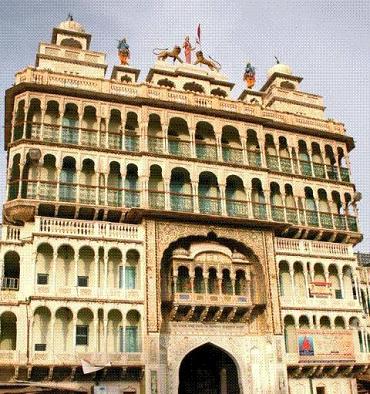
jhunjhunu TourismHistorians say that the town probably got its name from a Jat ruler (Jats are the people of Haryana, and they played a major role in certain parts of Rajasthan too). But historians do not say when exactly the foundation day of jhunjhunu happened. So the first 'recorded' ruler was Mohammad Khan, a Kaimkhani nawab (Mughal governor) who occupied jhunjhunu in 1450. His descendants sat tight on the throne until 1730, when the then nawab, Rohilla Khan, died on a journey to Delhi. and that was the end of the nawab rule, because Sardul Singh, the great Shekhawat Rajput, who was also a diwan (minister) in Khan's court, seized jhunjhunu in a bloodless coupStories of valor abound in the region. Innumerable monuments are connected with lives and tales of warriors of jhunjhunu. The havelis of the rich and famous attract the tourists with the fresco paintings in different colors and shades.  The culture and history of jhunjhunu is very well depicted in these paintings. However, these havelis now lie vacant.
jhunjhunu gets name after Jujhar Singh Nehra (1664 - 1730) or Jhunjha, a Jat chieftain of Rajasthan. The Jats through Jujhar Singh and Rajputs through Sardul Singh agreed upon a proposal to fight united against Muslim rulers and if the Nawab were defeated Jujhar Singh would be appointed the Chieftain. Jujhar Singh one day found the right opportunity and attacked Nawabs at jhunjhunu and Narhar. He defeated the army of Nawab Sadulla Khan on Saturday, aghan sudi 8 samvat 1787 (1730 AD). According Kunwar Panne Singh, Jujhar Singh was appointed as Chieftain after holding a darbar. After the 'tilak' ceremony of appointment as a sardar or chieftain, the Rajputs through conspiracy killed Jujhar Singh in 1730 AD at a lonely place. Jujhar Singh thus became a martyr and the town jhunjhunu in Rajasthan was named so after the memory of Jujhar Singh or Jhunjha.
jhunjhunu lies in the core of the well known erstwhile Shekhawati province.
The culture and history of jhunjhunu is very well depicted in these paintings. However, these havelis now lie vacant.
jhunjhunu gets name after Jujhar Singh Nehra (1664 - 1730) or Jhunjha, a Jat chieftain of Rajasthan. The Jats through Jujhar Singh and Rajputs through Sardul Singh agreed upon a proposal to fight united against Muslim rulers and if the Nawab were defeated Jujhar Singh would be appointed the Chieftain. Jujhar Singh one day found the right opportunity and attacked Nawabs at jhunjhunu and Narhar. He defeated the army of Nawab Sadulla Khan on Saturday, aghan sudi 8 samvat 1787 (1730 AD). According Kunwar Panne Singh, Jujhar Singh was appointed as Chieftain after holding a darbar. After the 'tilak' ceremony of appointment as a sardar or chieftain, the Rajputs through conspiracy killed Jujhar Singh in 1730 AD at a lonely place. Jujhar Singh thus became a martyr and the town jhunjhunu in Rajasthan was named so after the memory of Jujhar Singh or Jhunjha.
jhunjhunu lies in the core of the well known erstwhile Shekhawati province.
|

